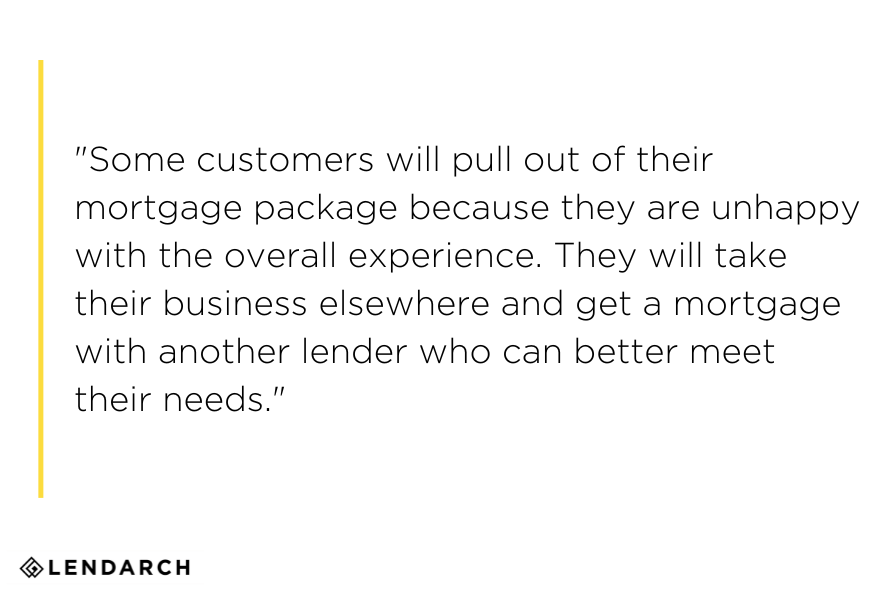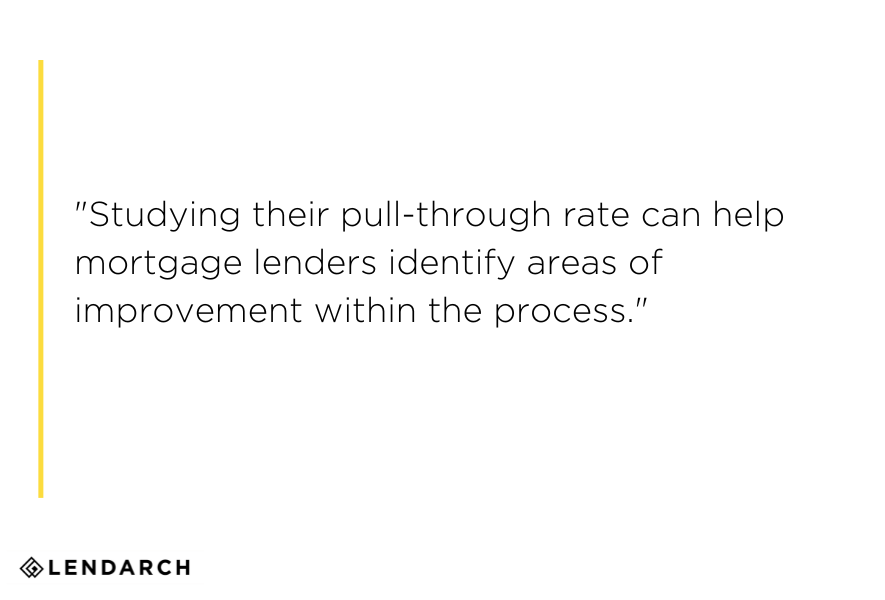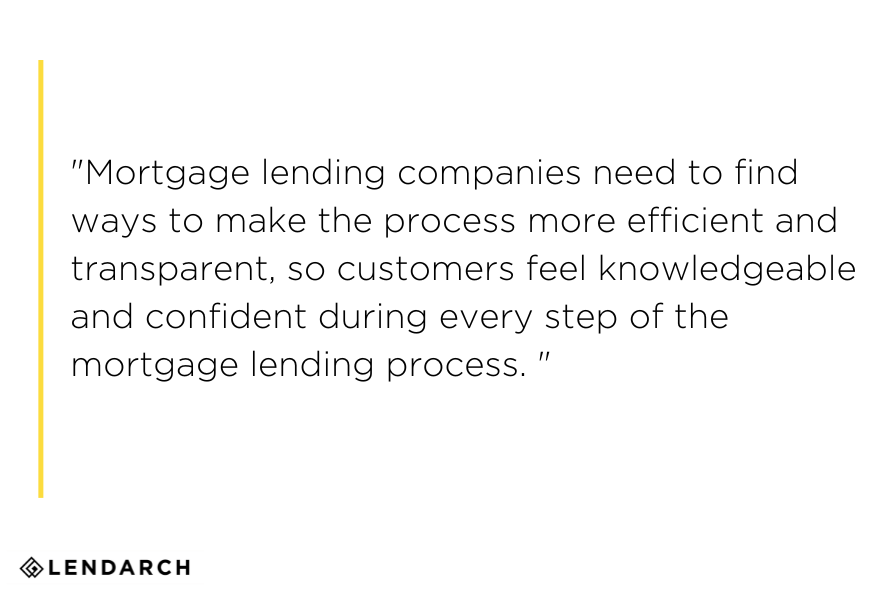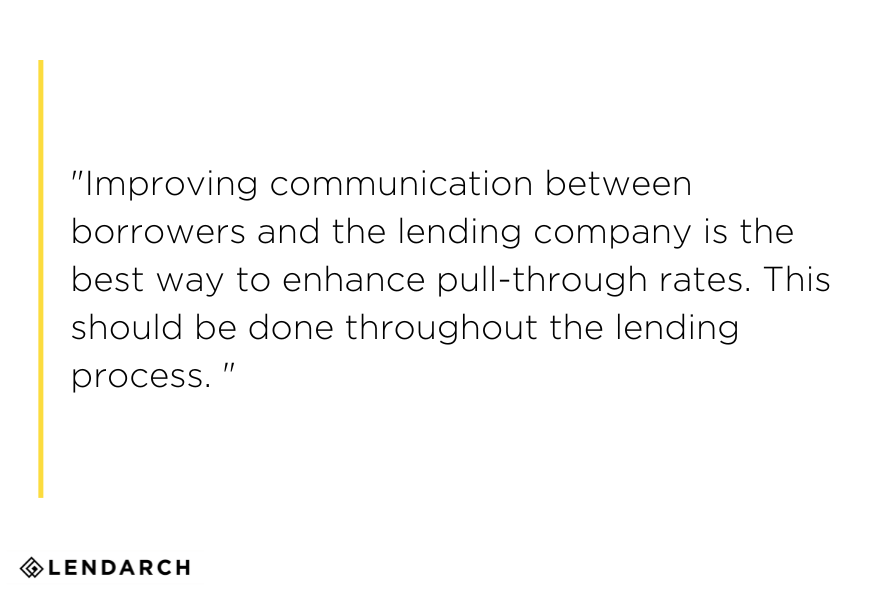The pull-through rate is an essential key performance indicator (KPI) for mortgage lenders. It is calculated using a simple math formula that tells lenders how many loans are funded compared to how many applications are submitted.
Pull-through rates have been in the low 70s for the past five years, with a low of 67 percent during Q1 of 2020. The Mortgage Bankers Association has found that pull-through rates for new home purchases and mortgage refinances are currently around 75 percent.
The pull-through rate is typically higher for home purchases than for refinanced homes. One reason is that borrowers for new homes tend to stick with the loan officer their realtor recommends. In addition, many loan officers decide not to waste their time with rate-shoppers on refinancers or avoid borrowers with weaker credit.
Of course, even though a 70 – 75 percent pull-through rate may seem high, it indicates that 25 – 30 percent of all mortgage and refinance applications don’t end up closing.
There can be several reasons for this, including borrowers deemed unqualified by the underwriter, a snag in the appraisal process, or borrowers who decide to back out because of uncertain market conditions. These situations are largely out of the financial institution’s control.
However, another possibility is entirely within a mortgage lending company’s control – the customer experience.

Some customers will pull out of their mortgage package because they are unhappy with the overall experience. They will take their business elsewhere and get a mortgage with another lender who can better meet their needs.
What KPIs are Important in the Mortgage Industry?
The pull-through rate is arguably one of the most important KPIs in the mortgage industry. It gives lenders a good idea of how many applicants are able to get through the entire mortgage process from start to finish. Studying their pull-through rate can help mortgage lenders identify areas of improvement within the process.

Of course, the pull-through rate is just one of many KPIs in the lending industry. Here are a few other KPIs that matter to mortgage lenders.
Decision to close time cycle
This metric tells lending companies how many days it takes to close and fund a loan after the underwriting decision is made. It can offer insight into a lending team’s efficiency. For example, a cycle time that is longer than average (around one week) can indicate unclear communication between borrowers and loan officers.
Customer acquisition cost
This compares the lifetime value of a customer to their acquisition cost, i.e., how much the lending company spent on marketing materials and other means to attract and acquire the customer. It can help lenders determine how much they can spend on acquiring new customers to remain profitable.
Abandoned loan rate
Abandoned loans are those that borrowers abandon after they have been approved. This abandonment can happen for several reasons, such as the borrower finding better interest rates or dropping the plan of buying the home. Abandonment can also be due to a negative customer experience, miscommunication between the borrower and lender, and inefficiencies within the application and approval processes.
How Do Low Mortgage Pull-Through Rates Affect Mortgage Companies?
Attracting leads takes considerable time and money on the part of the mortgage lending company. Consider the marketing costs of attracting borrowers to apply for a mortgage loan. Then there is the time it takes to review applications and deliver pre-approvals. Loan estimates need to be delivered within three days, which means loan officers, processors, and underwriters all need to give an application their full attention.
Low mortgage pull-through rates mean that lending companies are taking in significantly more applications than they can approve. This can bog mortgage lenders down in paperwork, leading to a loss in profits for the amount of time they spend reviewing applications. There is no way to recoup the costs (financial and time) that are spent reviewing applications once the borrower pulls out of the process.
Strategies to Help Improve Pull-Through Rates
Improving communication between borrowers and the lending company is the best way to enhance pull-through rates. This should be done throughout the lending process.
Pre-application
Borrowers educated about the mortgage lending process are more likely to stick with it once they decide to go through with it.
At the same time, borrowers who understand that they might need to raise their credit score or build up cash reserves before applying for a mortgage loan are more likely to wait until they are financially stable enough to go through the process.
In-process
One reason borrowers jump ship is that they do not understand what is happening with their application. For example, they may become worried if getting a funding decision takes longer than expected and abandon their application instead of waiting it out.
Keeping borrowers informed along the way is essential for getting more borrowers to stick with the process. They should feel confident that their mortgage lender is staying on top of their application and providing updates and guidance along the way.
Post-close
Borrowers are more likely to return to a mortgage lender they have worked with if they have an outstanding customer experience. So, loan officers should stay in touch with borrowers even after the mortgage is closed to answer questions or offer solutions to their changing needs.
How Technology Can Help Improve Mortgage KPIs
Mortgage automation offers several tools that can help mortgage lenders improve their KPIs. These digital tools can help mortgage lenders stay in touch with their customers and keep them informed without taking time away from their internal resources.
Using digital tools to provide omnichannel guidance and communication ensures that customers are updated about their mortgage loan process from wherever they are, whether on a mobile device, desktop, or in person.

The most valuable way to improve mortgage KPIs is to improve the overall customer experience. Mortgage lending companies need to find ways to make the process more efficient and transparent, so customers feel knowledgeable and confident during every step of the mortgage lending process.
Need More Help? Talk to LendArch
Improving mortgage lending KPIs is essential, and it won’t happen overnight. It takes a concerted effort to identify which KPIs need to be improved, then implement digital strategies to take them to the next level.
For more ideas about how digital technology can improve KPIs at your mortgage lending institution, contact the experts at LendArch. Our experts can help you identify which KPIs need the most attention within your organization, then give you directions on how to improve them using the latest digital tools.
As Chief Executive Officer, Tammy Richards brings over 35 years experience in Mortgage Banking, EClose/EMortgage, Robotics/AI/OCR/ICR implementation and more. She has been an executive and has led Nationally at Bank of America, Caliber Home Loans and most recently served as Chief Operating Officer for Loan Depot. She is passionate about and is an expert in the mortgage industry's ongoing tech transformation.











